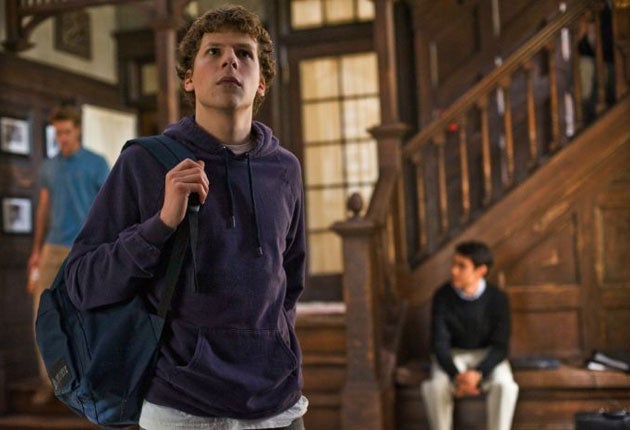The art of film costume design
Forget period dramas and fantasies, says Tim Walker – costume design for contemporary films is much harder to get right

On the morning after the Oscars, there are always groups of filmmakers guaranteed to have been under-represented among the award-winners. Directors of unwieldy, high-quality blockbusters whose surnames aren't Cameron, for example. Or, say, the only studio in Hollywood with a 100 per cent critical success rate and still no Best Picture prize. But Chris Nolan and Pixar both get their rewards at the box office. Less high-profile but no less significant, costume designers have supposedly long dreaded awards season, since so few of them stand a chance of being recognised.
This year's Oscar for Best Costume Design went to Colleen Atwood for Alice in Wonderland. Atwood also won in 2006 for Memoirs of a Geisha and in 2002 for Chicago. The past decade's other winners include: The Lord of the Rings: The Return of the King, The Aviator, Marie Antoinette, Elizabeth: The Golden Age, The Duchess and The Young Victoria. Notice anything missing? Not to belittle the great work of Atwood and her peers, but there's a glaring lack of any films from beyond the period or fantasy genres. The only contemporary title to earn even a nomination in that time is The Devil Wears Prada – a film about the fashion industry.
The same prejudice afflicts the Baftas. Black Swan's costume designer, Amy Westcott, was shortlisted for the British awards (Atwood won again), but presumably on the basis of its semi-fantastical ballet outfits. How are the costumiers on contemporary Best Picture nominees supposed to feel when not a single one of them gets so much as a nod? Granted, 127 Hours only featured one character – and thus one costume – for most of its duration. But the designers on Winter's Bone, The Fighter and The Kids Are All Right all created superbly authentic looks for highly specific circumstances: the rural poor of the Ozark mountains; the urban poor of Boston; the organic-only, liberal middle-class of California.
According to the film's subject, Facebook CEO Mark Zuckerberg, the most accurate aspect of The Social Network was the costume design. "It's interesting, the stuff they focused on getting right," he said. "Every single shirt and fleece they had in that movie is actually a shirt or fleece that I own."
Jacqueline West, The Social Network's costume designer, helped to distance Zuckerberg (played by Jesse Eisenberg) from his partners and peers by putting them in suits: Sean Parker (Justin Timberlake) accessorised his with T-shirts and hoodies, a rebel hacker in businessman's clothing. Eduardo Saverin (Andrew Garfield) tried his best to dress as smartly as the captains of industry he aspired to join. The Winklevoss twins (Armie Hammer) naturally wore immaculately tailored outfits, like the captains of industry they were always destined to become.
The job of dressing contemporary characters has its advantages, but it has its challenges, too. In a period drama, let alone a fantasy, it's far easier to convince the average viewer of a costume's plausibility. Most will have no idea when the ruff went out of fashion, or when pantyhose first went on sale. They can spot, however, when someone is too old for a hoodie, or too posh for trainers.
The website Recycledmoviecostumes.com demonstrates the flexibility of period costume by compiling images of outfits used in more than one film or TV production: a ballgown from The Madness of King George, which has since appeared on screen a further six times, for instance – not to mention at least half the clothes in Downton Abbey. Could a present-day film get away with such casual chronological costume-swapping? What if the deeply Noughties Zuckerberg had been dressed in a deeply Nineties Pearl Jam t-shirt?
The Costume Designer's Guild has its own awards each year, with one prize for contemporary costume design, another for period design, and a third for fantasy. Far be it from me to suggest the ceremony go on any longer than it already does, but surely the Academy ought to acknowledge the same distinctions?
Join our commenting forum
Join thought-provoking conversations, follow other Independent readers and see their replies
Comments